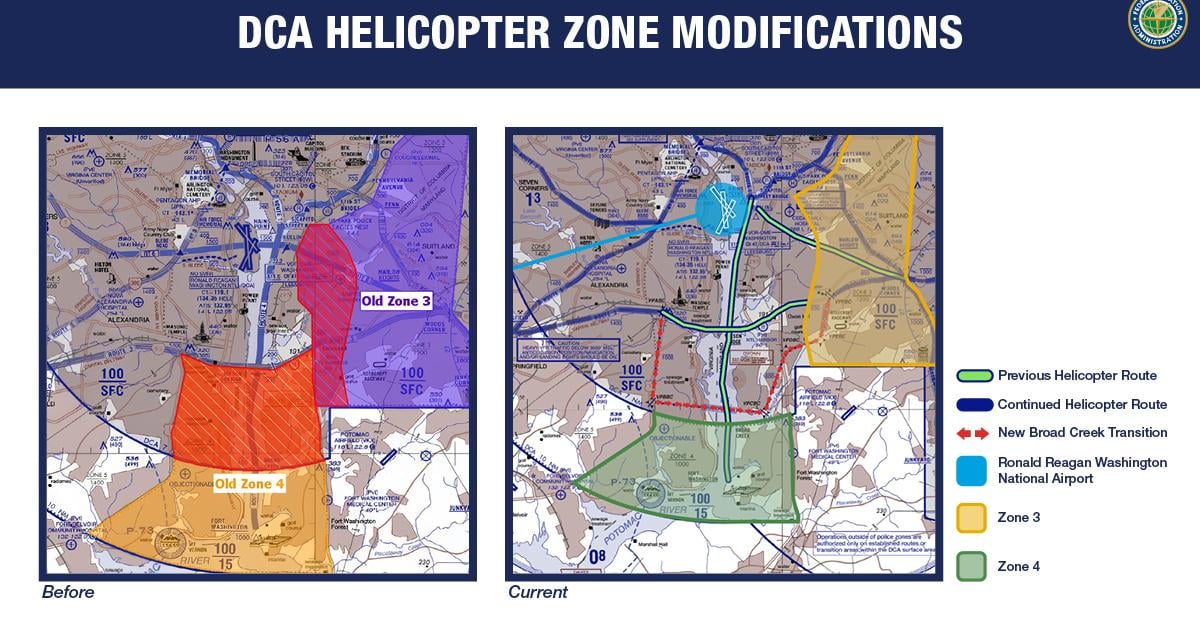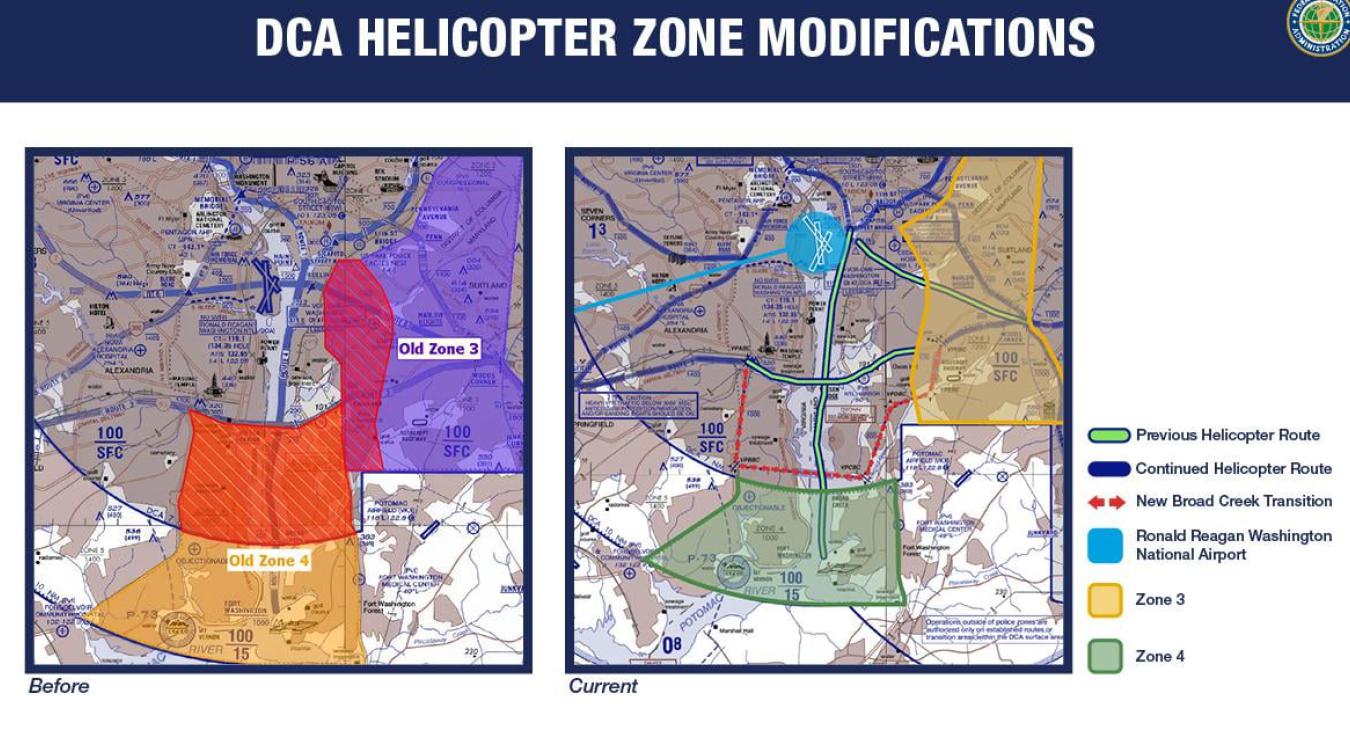As a result of the Jan. 29, 2025 nighttime midair collision between a PSA Airlines CRJ700 regional jet and a U.S. Army Black Hawk helicopter, the FAA has modified helicopter zones and routes near Ronald Reagan Washington National Airport (KDCA).
The vertical clearance between helicopters operating on one of the former routes and aircraft on the correct glidepath to KDCA’s Runway 33 was only 75 feet, and despite years of data about traffic conflicts in that area, nothing was done to alter these routes until after the accident. There were also many cases where the Army helicopters were not flying with ADS-B Out switched on, and the FAA now requires that military and government operators broadcast their position and identification using ADS-B Out, “with very limited exceptions,” according to the agency.
The NTSB preliminary report on the midair collision cited statistics about traffic conflicts near KDCA: “Review of information gathered from voluntary safety reporting programs along with FAA data regarding encounters between helicopters and commercial aircraft near DCA from 2011 through 2024 indicated that a vast majority of the reported events occurred on approach to landing. Initial analysis found that at least one TCAS resolution advisory (RA) was triggered per month due to proximity to a helicopter. In over half of these instances, the helicopter may have been above the route altitude restriction. Two-thirds of the events occurred at night.”
Although permanent restrictions, route closures, and implementation of procedures for urgent missions took place in March, these do not change with the new zones and routes. The changes came about after the FAA met with stakeholders that included the Department of Defense, DC Metropolitan Police, and medical helicopter operators. The FAA also trained all local air traffic controllers on updated procedures.
Key changes in the KDCA area, effective June 12, include reducing the sizes of Zones 3 and 4 and moving them farther from the airport, “ensuring required safe separation between helicopters and other aircraft,” the FAA said. “A new Broad Creek Transition has been established for helicopters traveling south of the airport, creating greater vertical separation from commercial aircraft on final approach to the airport.”
Another result of the accident is that the FAA is examining other cities that may have elevated risk, not only in the Baltimore-Washington area, but also in those where there are high volumes of mixed traffic. Work has already been underway at Las Vegas, for example, to mitigate the risk of tour helicopters and airliners sharing the same airspace.
Reference: By MATT THURBER • Editor-in-Chief | AIN



